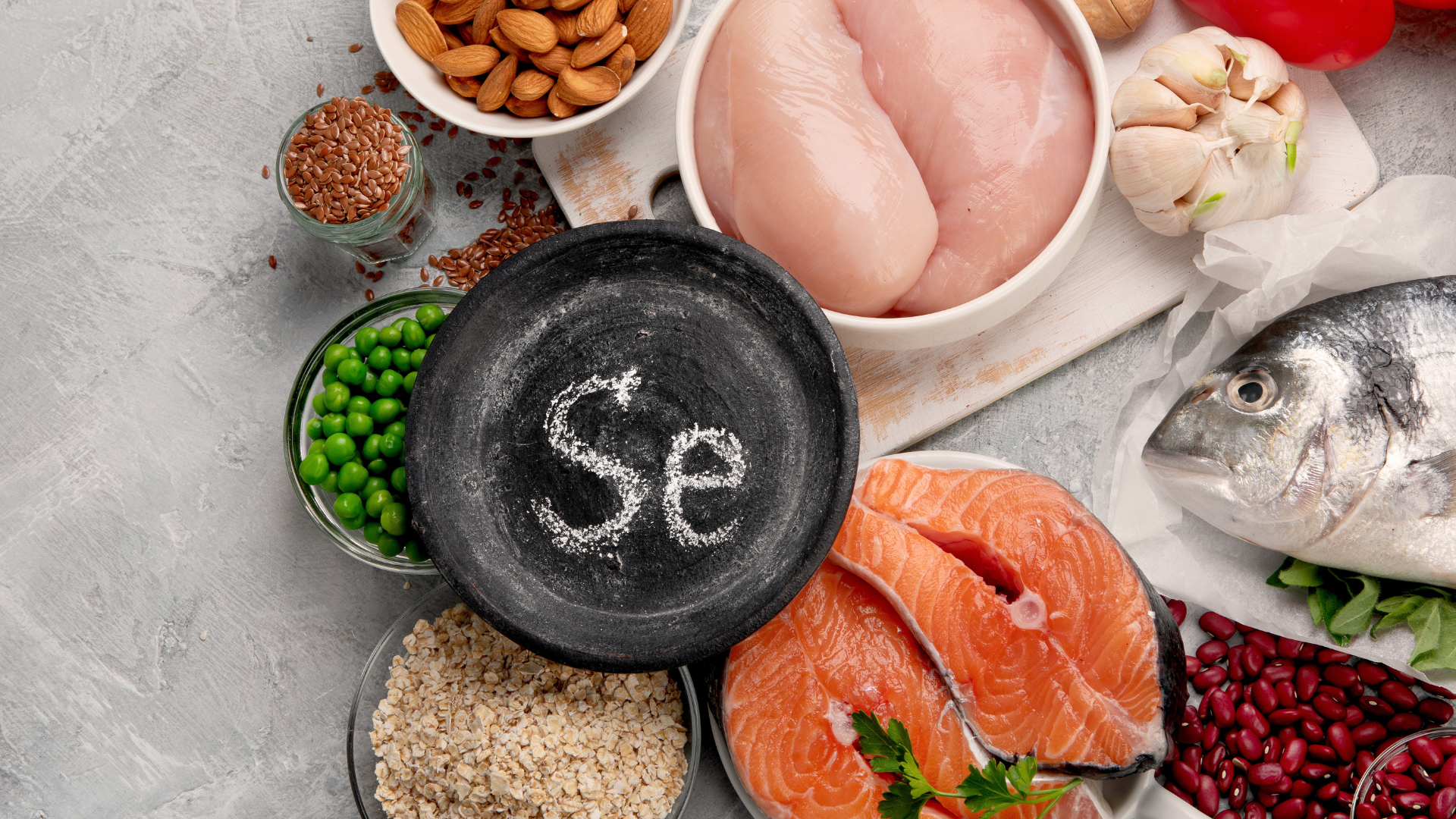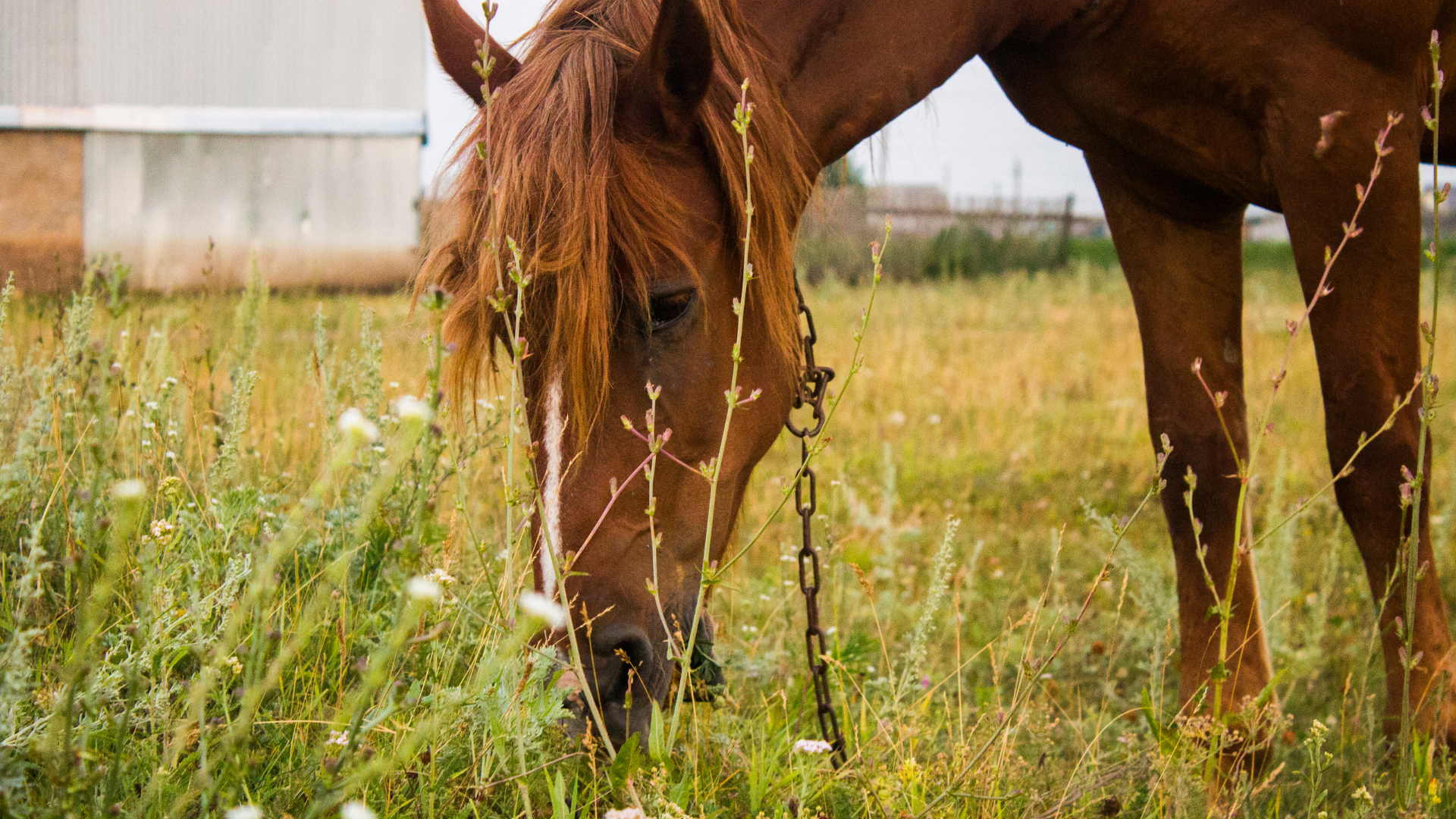Selenium in horses: Important facts about proper care and optimal feeding
Selenium is an essential trace element that plays a crucial role in the health of your horse. It supports the immune system, cell protection, muscles and energy metabolism. The correct selenium supply is therefore essential to avoid deficiency symptoms, muscle diseases and a weakened immune system.
However, not all horses get enough selenium from their basic feed, as the selenium content of hay, grain and other feedstuffs depends greatly on the region. The well-known north-south divide in Europe means that in some regions the natural selenium supply is insufficient. Therefore, a targeted selenium intake through mineral feed or supplementary feed may be necessary.
In this article you will learn everything about the correct dosage, selenium requirements, the utilization of selenium and the connection between selenium and vitamin E in horses.

Why is selenium so important for horses?
Selenium is one of the essential trace elements and has a variety of vital functions in horses. It plays a central role in energy metabolism and supports cell protection mechanisms through the formation of glutathione peroxidase, an enzyme that protects cells from oxidative stress.
The muscles in particular benefit from a sufficient supply of selenium, as the trace element selenium counteracts muscle problems, tension and stiffness. Horses that regularly take part in competitive sports, for example, have an increased need for selenium and should therefore have their selenium levels checked regularly. Selenium also helps to strengthen the immune system by supporting the immune system and reducing susceptibility to infections.
Horses with a sufficient supply of selenium often show better performance, relaxed muscles and a higher resistance to infections. Since selenium is also involved in the regulation of thyroid metabolism, a deficiency can also have effects on the entire body.
Therefore, the horse’s selenium intake should be specifically optimized to avoid deficiency symptoms or health damage.
Selenium deficiency in horses: symptoms, consequences and treatment
A selenium deficiency in horses can have serious health consequences. Since selenium is essential for the immune system, muscle metabolism and cell protection, the following symptoms may indicate a selenium deficiency:
-
muscle weakness, muscle tremors and muscle hardening
-
Weak performance, rapid fatigue and general lack of motivation
-
Increased susceptibility to infection due to a weakened immune system
-
Delayed wound healing and increased susceptibility to inflammation
-
Skeletal and growth disorders in young horses
-
Fertility problems in broodmares and stallions
-
White muscle disease in foals, a severe muscle disease that is often fatal
Selenium deficiency in horses is often caused by insufficient selenium levels in the basic feed. Studies have shown that horses in regions with low selenium levels in the soil are particularly at risk.
Hay and grain from these regions often contain too little selenium to cover a horse's daily needs. The targeted addition of selenium through mineral feed or supplementary feed can help prevent deficiency symptoms.
Examinations and diagnosis of selenium deficiency
A blood test provides information about the horse's selenium levels and shows whether additional selenium intake is necessary.
Horse owners should have the selenium concentration in the blood tested regularly, especially in performance horses or animals that show signs of deficiency. The dosage should always be determined in consultation with a veterinarian to ensure optimal supply and avoid overdose.
How does a selenium deficiency develop in horses?
Selenium deficiency in horses can be caused by various factors:
Regional differences
The selenium content in the soil varies greatly between different regions. In Central Europe in particular, there is a clear north-south gradient, with northern regions often having lower selenium levels than southern ones. As a result, the feedstuffs grown there, such as hay and grain, also usually contain lower levels of selenium.
Horse owners in selenium-poor regions should therefore pay particular attention to the selenium supply and, if necessary, supplement their diet with selenium.

feeding with low-selenium feed
Horses that are fed exclusively or predominantly hay and grain often do not receive enough selenium. Hay from heavily used soils in particular can have low selenium levels.
Even modern, heavily processed feeds often lose some of their natural selenium content during processing. Regular analysis of the basic feed can help to make targeted supplements.
Increased need for selenium due to training or stress
Performance horses or horses that are regularly subjected to heavy physical strain have an increased need for selenium. Intensive training increases oxidative stress in the muscle cells, which means more selenium is needed for cell protection.
Stress, whether caused by transport, changing stables or other environmental factors, can also increase the need for selenium, as the immune system is put under greater strain. Without an appropriate selenium intake, deficiency symptoms can quickly arise.
Interactions with other trace elements
The utilization of selenium in the body is influenced by other trace elements. An unbalanced intake of zinc, manganese or lysine can impair the absorption and utilization of selenium in the organism.
Zinc in particular plays an important role here, as it competes with selenium for absorption in the intestine. Horse owners should therefore ensure a balanced supply of all essential trace elements to ensure optimal utilization.
Selenium Supply: The Right Feeding for Your Horse
There are various strategies to optimally cover your horse's selenium requirements. The most important measure is targeted feeding with selenium-containing nutrients to prevent deficiency symptoms.
Here are some ways you can optimally supply your horse with selenium:
-
Analyze the horse’s forage: An examination of the hay provides information about the natural selenium content and helps to determine a targeted supplement.
-
Use mineral feed and supplementary feed: High-quality feed often contains sodium selenite or selenium yeast, which ensure better utilization. Make sure to combine it sensibly with other trace elements such as Zinc , manganese and Lysine . Take a look at our mineral feeds in the online shop!
-
Incorporate natural sources of selenium: Flaxseed, grains and certain herbs can support selenium intake naturally.
-
Regular blood tests: To keep an eye on your horse's selenium levels, you should have the selenium balance checked at regular intervals using blood tests.
Avoid selenium excess: The right dosage is crucial
Too much selenium can be just as problematic as a deficiency. Excessive selenium intake can have toxic effects and cause serious health problems.
Typical signs of a selenium overdose are:
-
lameness and hoof changes
-
hair loss and skin problems
-
damage to the skeleton and organs
-
disorders of the immune system and digestion
It is therefore important to dose exactly as recommended.
Horses that are already fed selenium-containing feed should not be given large amounts of additional selenium to avoid excess.
Conclusion: The optimal selenium supply for your horse
Selenium is an essential trace element for horses and plays a crucial role in muscles, the immune system, cell protection and energy metabolism.
Feeding according to needs and targeted compensation through mineral feed or supplementary feed are necessary to avoid selenium deficiency or excess. Regular tests of the selenium concentration in the blood will help you to ensure that your horse is receiving the best possible care.
Make sure the feed has a good composition, is combined with vitamin E, zinc and other trace elements, and is dosed appropriately.













